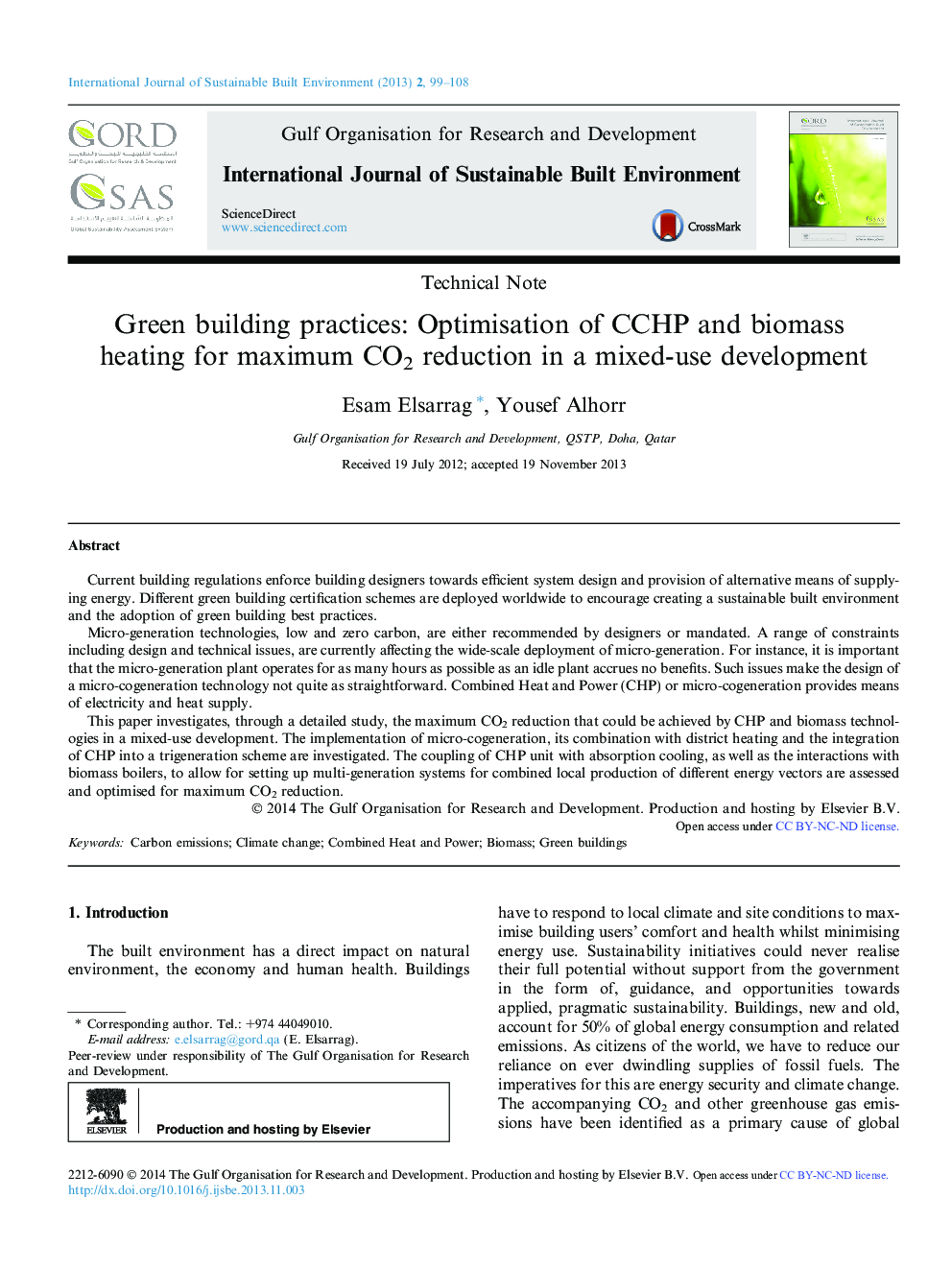| کد مقاله | کد نشریه | سال انتشار | مقاله انگلیسی | نسخه تمام متن |
|---|---|---|---|---|
| 214856 | 1425938 | 2013 | 10 صفحه PDF | دانلود رایگان |

Current building regulations enforce building designers towards efficient system design and provision of alternative means of supplying energy. Different green building certification schemes are deployed worldwide to encourage creating a sustainable built environment and the adoption of green building best practices.Micro-generation technologies, low and zero carbon, are either recommended by designers or mandated. A range of constraints including design and technical issues, are currently affecting the wide-scale deployment of micro-generation. For instance, it is important that the micro-generation plant operates for as many hours as possible as an idle plant accrues no benefits. Such issues make the design of a micro-cogeneration technology not quite as straightforward. Combined Heat and Power (CHP) or micro-cogeneration provides means of electricity and heat supply.This paper investigates, through a detailed study, the maximum CO2 reduction that could be achieved by CHP and biomass technologies in a mixed-use development. The implementation of micro-cogeneration, its combination with district heating and the integration of CHP into a trigeneration scheme are investigated. The coupling of CHP unit with absorption cooling, as well as the interactions with biomass boilers, to allow for setting up multi-generation systems for combined local production of different energy vectors are assessed and optimised for maximum CO2 reduction.
Journal: International Journal of Sustainable Built Environment - Volume 2, Issue 1, June 2013, Pages 99–108